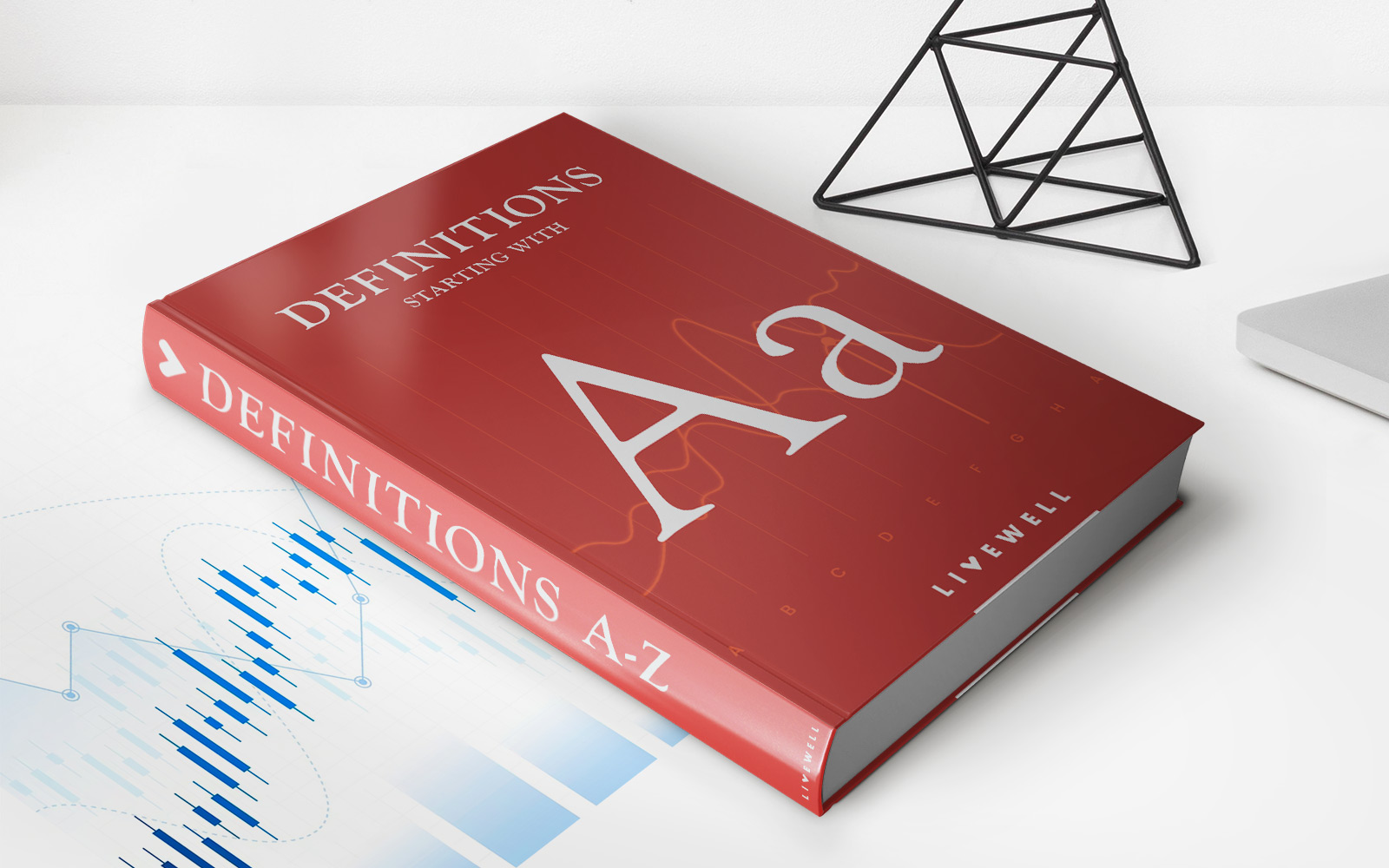

Finance
What Is CTA In Accounting
Published: October 13, 2023
Discover the role of CTA (Call to Action) in accounting and how it impacts finance. Gain insights into the significance of CTA for financial decision-making.
(Many of the links in this article redirect to a specific reviewed product. Your purchase of these products through affiliate links helps to generate commission for LiveWell, at no extra cost. Learn more)
Table of Contents
Introduction
In the field of finance and accounting, there are various terms and concepts that are essential for understanding the intricacies of financial statements and reports. One such concept is the Cumulative Translation Adjustment (CTA). CTA plays a crucial role in accounting, especially for multinational companies with operations in different countries.
In simple terms, CTA refers to the changes in the value of a company’s net assets due to fluctuations in foreign exchange rates. When a company conducts business in multiple countries, it is exposed to currency exchange rate risk. As these rates change over time, the value of the company’s assets and liabilities denominated in foreign currencies can also fluctuate.
CTA reflects the impact of these exchange rate movements on a company’s balance sheet and equity. Thus, it is an important element when it comes to accurately reflecting the financial position of a multinational company.
Understanding CTA is crucial not only for accountants and financial analysts, but also for investors, creditors, and stakeholders who rely on the accuracy and validity of financial statements to make informed decisions about a company’s performance and prospects.
In this article, we will delve deeper into the definition of CTA, its importance in accounting, various examples of CTA, methods of calculating CTA, factors affecting CTA, treatment of CTA in financial statements, challenges in managing CTA, and conclude with a summary of its significance in the field of finance.
Definition of CTA
Cumulative Translation Adjustment (CTA) is a financial term that refers to the cumulative impact of changes in exchange rates on a company’s net assets, specifically those denominated in foreign currencies. It represents the difference between the translation of financial statements based on local currency and the translation based on the reporting currency.
When a company has operations in multiple countries, it typically prepares financial statements in the local currency of each subsidiary or branch. However, for reporting purposes, these financial statements need to be converted into the company’s reporting currency, which is usually the currency in which the consolidated financial statements are prepared.
Fluctuations in exchange rates can significantly impact the value of a company’s foreign investments, assets, and liabilities. These fluctuations can arise due to various factors such as economic conditions, political developments, and market forces. The cumulative effect of these exchange rate changes on the company’s net assets is reflected in the CTA.
CTA can be positive or negative, depending on whether the exchange rate movements resulted in a net gain or loss for the company. If the local currency strengthens compared to the reporting currency, it leads to a positive CTA, indicating a gain. Conversely, if the local currency weakens, it results in a negative CTA, representing a loss.
It is important to note that CTA is a non-cash item and does not affect a company’s cash flow or operating performance directly. However, it does impact the reported equity and can have implications for investors, analysts, and financial statement users when assessing a company’s financial health and stability.
The calculation of CTA involves comparing the translated financial statements based on the exchange rates at different reporting periods. The difference between the two is the cumulative translation adjustment. CTA is typically disclosed in the equity section of a company’s balance sheet or in the notes to the financial statements.
Now that we have a clear definition of CTA, let us explore its significance and implications in the field of accounting.
Importance of CTA in Accounting
CTA plays a crucial role in accounting, particularly for multinational companies. Here are some key reasons why CTA is important:
- Accurate reflection of financial position: CTA helps in accurately reflecting the financial position of a multinational company by accounting for the impact of exchange rate fluctuations on its assets, liabilities, and equity. It ensures that the financial statements provide a true and fair view of the company’s financial health.
- Compliance with accounting standards: Accounting standards, such as International Financial Reporting Standards (IFRS) and Generally Accepted Accounting Principles (GAAP), require companies to account for the effects of foreign currency translations on their financial statements. CTA enables companies to comply with these standards and maintain transparency in their reporting.
- Evaluation of performance: CTA affects a company’s reported equity, which is an important component in evaluating its performance. Investors and analysts consider the impact of CTA when assessing a company’s overall profitability and financial stability. It provides a more accurate picture of the company’s true economic performance.
- Risk management: CTA helps in identifying and managing the currency exchange rate risk faced by multinational companies. By tracking the changes in the value of net assets due to exchange rate fluctuations, companies can take proactive measures to mitigate potential risks and protect their financial position.
- Decision-making: For stakeholders and decision-makers, including management, investors, and creditors, understanding the impact of CTA is crucial for making informed decisions. It provides insights into the company’s exposure to foreign currency risk and its ability to navigate through volatile exchange rate environments.
- Comparability and consistency: CTA allows for comparability and consistency in financial reporting. Companies that operate in multiple countries need to convert their subsidiary financial statements into a common reporting currency. CTA ensures that the translation process is consistent across different reporting periods and facilitates meaningful comparisons of financial performance.
In summary, CTA is important in accounting as it ensures the accurate reflection of a multinational company’s financial position, compliance with accounting standards, evaluation of performance, risk management, informed decision-making, and comparability in financial reporting. Understanding CTA and its implications is crucial for both financial professionals and stakeholders involved in assessing a company’s financial health and performance.
Examples of CTA in Accounting
Let’s explore some examples that illustrate how Cumulative Translation Adjustment (CTA) is recognized and calculated in accounting:
- Translation of subsidiary financial statements: Consider a multinational company that has subsidiaries in different countries. Each subsidiary prepares its financial statements in the local currency. When preparing consolidated financial statements, the subsidiary financial statements need to be translated into the reporting currency. The exchange rate at the balance sheet date is used for translation. The difference between the translated amounts and the original amounts is recorded as CTA in the equity section of the consolidated balance sheet.
- Revaluation of foreign currency-denominated assets and liabilities: A company may have foreign currency-denominated assets and liabilities, such as investments, loans, or trade receivables/payables. Fluctuations in exchange rates can impact the fair value of these items. The changes in value are recognized as CTA and incorporated into the company’s financial statements.
- Conversion of foreign currency retained earnings: When a company operates with subsidiaries in different countries, each subsidiary’s retained earnings are initially reported in the local currency. As the consolidated financial statements are prepared in the reporting currency, the retained earnings of each subsidiary are converted at the exchange rates in effect when the earnings were generated. The resulting difference between the initial translation and subsequent conversion is recorded as CTA.
- Intercompany transactions: Intercompany transactions between subsidiaries in different countries can give rise to foreign currency exposures. When intercompany balances or transactions are settled at different exchange rates, it can result in CTA. The impact of these exchange rate differences is accounted for in the consolidated financial statements.
- Hedging foreign exchange risk: Companies may use financial instruments like forward contracts or options to hedge against foreign exchange risk. The changes in the fair value of these hedging instruments due to exchange rate fluctuations are recognized in CTA. This helps to offset the impact of exchange rate movements on the company’s financial statements.
These examples demonstrate how CTA manifests in various accounting scenarios. It encompasses the translation of subsidiary financial statements, revaluation of foreign currency assets and liabilities, conversion of foreign currency retained earnings, treatment of intercompany transactions, and the impact of hedging foreign exchange risk. By considering these examples, companies can accurately account for and disclose CTA in their financial statements, ensuring transparency and compliance with accounting standards.
Methods of Calculating CTA
Calculating the Cumulative Translation Adjustment (CTA) involves comparing the translated financial statements based on different exchange rates at different reporting periods. There are a few commonly used methods to calculate CTA:
- Temporal method: The temporal method is a historical method used to translate financial statements. Under this method, monetary assets and liabilities (cash, receivables, payables) are translated at the current exchange rate, while non-monetary assets and liabilities (property, plant, equipment) are translated at historical exchange rates. The difference between the current and historical rates gives rise to CTA. The temporal method is typically used when there is a high degree of monetary assets and liabilities in the company’s operations.
- Current rate method: The current rate method, also known as the all-current method, translates all assets and liabilities at the current exchange rate. Under this method, both monetary and non-monetary items are translated at the current exchange rate. Any difference between the current rate translation and the previous rate translation creates the CTA. The current rate method is commonly used when there is a significant amount of non-monetary assets and liabilities in the company’s operations.
- Functional currency approach: The functional currency approach is focused on determining the functional currency of the company’s foreign operations. The functional currency is the currency of the primary economic environment in which the entity operates. Once the functional currency is determined, the financial statements are translated into the reporting currency using the exchange rate at the balance sheet date. The CTA arises from the difference between the translated financial statements and the previous translation. This method is suitable when there is a mix of monetary and non-monetary items in the company’s operations.
- Weighted average method: The weighted average method calculates CTA based on a weighted average of the exchange rates used during the reporting period. This method takes into account the impact of exchange rate fluctuations throughout the period rather than using a single rate at the balance sheet date. The weighted average method is often used when there are significant fluctuations in exchange rates during the reporting period.
The method used to calculate CTA depends on various factors, including the nature of the company’s operations, the currency composition of its assets and liabilities, and the accounting standards followed. It is important for companies to choose a method that best reflects their specific circumstances and ensures compliance with accounting standards.
Calculating and recording CTA accurately is essential for providing a comprehensive view of the impact of exchange rate movements on a company’s financial position. It allows stakeholders to understand the influence of currency fluctuations on the company’s reported equity and overall financial performance.
Factors Affecting CTA
The Cumulative Translation Adjustment (CTA) in accounting is influenced by several factors that impact the value of a company’s net assets due to changes in foreign exchange rates. Understanding these factors is crucial for accurately assessing and managing CTA. Here are some key factors that can affect CTA:
- Exchange rate fluctuations: The primary factor influencing CTA is the fluctuation in exchange rates. Any changes in the exchange rates between the reporting currency and the local currency of subsidiaries or foreign operations can lead to variations in the translation of financial statements. Volatile exchange rate movements can result in significant CTA over time.
- Geographic diversification: Companies with operations and subsidiaries in multiple countries are more likely to be exposed to currency risks, as they deal with different currencies. The geographic diversification of a company’s operations amplifies the potential impact of exchange rate fluctuations on CTA.
- Transaction volumes and values: The volume and value of transactions denominated in foreign currencies also affect CTA. Companies with high levels of foreign currency transactions, such as sales, purchases, or borrowings, are more susceptible to CTA fluctuations. Large transactions can have a significant impact on the overall CTA amount.
- Economic conditions: Macroeconomic factors, such as inflation rates, interest rates, and economic stability, can influence exchange rates and subsequently impact CTA. Economic conditions in different countries can vary and affect the exchange rates, leading to changes in CTA for multinational companies operating in those countries.
- Government regulations and policies: Government regulations and policies, including foreign currency controls, monetary policies, and trade restrictions, can impact exchange rates and, consequently, CTA. Changes in regulations or implementation of new policies can lead to significant fluctuations in exchange rates and affect CTA calculations.
- Business strategy and hedging practices: The business strategy and hedging practices adopted by a company can also influence CTA. Companies that actively manage foreign exchange risks through hedging instruments, such as forward contracts or options, may experience reduced volatility in CTA compared to those that do not employ such risk management strategies.
It is important for companies to consider these factors when assessing the potential impact of CTA on their financial statements. By understanding and monitoring these factors, companies can better manage their exposure to currency risks and minimize the volatility of CTA.
In addition, it is crucial to note that CTA is a complex area of accounting and these factors can interact with each other, further complicating the calculation and interpretation of CTA for multinational companies. Thus, careful consideration and analysis of these factors is necessary to ensure accurate reporting and effective risk management.
Treatment of CTA in Financial Statements
The treatment of Cumulative Translation Adjustment (CTA) in financial statements depends on the accounting standards followed and the reporting requirements of the jurisdiction. Here are some common practices regarding the treatment of CTA:
1. Presentation in the equity section: CTA is typically presented in the equity section of the balance sheet. It is recorded as a separate line item, either as a component of other comprehensive income or as a separate line item within equity.
2. Presentation in the income statement: In some cases, CTA may also appear in the income statement if it is determined to be a significant item affecting the company’s financial performance. However, this practice is less common and varies based on accounting standards and reporting requirements.
3. Disclosures in the notes to financial statements: Companies are required to provide clear disclosures regarding CTA in the notes to the financial statements. These disclosures include details about the methods used to calculate CTA, significant exchange rate fluctuations, the impact on the financial statements, and any hedging activities undertaken to manage currency risk.
4. Reversals and accounting policy changes: When there is a reversal of CTA due to subsequent changes in exchange rates, the reversal is recorded in the statement of comprehensive income or directly against equity. Similarly, changes in accounting policies related to CTA are disclosed and applied retrospectively if required.
5. Impact on comprehensive income: CTA is a component of other comprehensive income, which is a financial statement section that reflects gains or losses that are not part of ordinary business operations. The impact of CTA on comprehensive income reflects changes in the company’s net assets due to exchange rate fluctuations.
6. Consideration of tax implications: Companies also need to consider the tax implications of CTA. Tax authorities may have specific regulations regarding the treatment of CTA and its impact on taxable profits.
It is important for companies to adhere to the accounting standards and reporting requirements specific to their jurisdiction. The treatment of CTA in financial statements ensures transparency, comparability, and compliance with accounting regulations, enabling investors, analysts, and stakeholders to assess the impact of foreign exchange rate fluctuations on a company’s financial position and performance.
Challenges in Managing CTA
Managing Cumulative Translation Adjustment (CTA) poses several challenges for multinational companies. These challenges are related to the complexity of accounting for foreign currency translations and the inherent volatility of exchange rates. Here are some common challenges faced in managing CTA:
- Exchange rate volatility: Exchange rates can be highly volatile, especially in dynamic market conditions. Managing CTA becomes challenging when exchange rates fluctuate significantly over short periods. The uncertainty in exchange rates makes it difficult for companies to accurately predict and account for the impact of these fluctuations on the financial statements.
- Determining the functional currency: Assigning the appropriate functional currency to subsidiaries or foreign operations can be a complex task. The functional currency is the primary currency in which the entity conducts its operations. The determination of the functional currency requires careful evaluation of various factors, such as the economic environment, cash flow patterns, and significant transactions. Making an incorrect determination can lead to incorrect CTA calculations and financial statement misrepresentation.
- Complexity of multiple subsidiaries: Multinational companies with numerous subsidiaries in different countries face additional complexity in managing CTA. Each subsidiary may have unique currency exposures and specific accounting requirements. Consolidating the financial statements and calculating CTA for the entire group becomes a challenge due to the diverse nature of the subsidiary operations.
- Accounting method selection: Companies have the option to use different accounting methods, such as the temporal method or the current rate method, to calculate CTA. Selecting the most appropriate method requires consideration of factors like the nature of the company’s operations, the types of assets and liabilities held, and compliance with accounting standards. Choosing the wrong method can distort the calculation of CTA and lead to inaccurate financial reporting.
- Tax implications: Managing the tax implications of CTA adds another layer of complexity. Income tax regulations may differ from accounting standards and require separate treatment of foreign exchange gains or losses. Companies need to navigate through the tax implications of CTA to ensure compliance with tax regulations and optimize tax planning strategies.
- Disclosures and transparency: Proper disclosure of CTA is essential to provide clarity and transparency to stakeholders. Ensuring that the financial statements include comprehensive disclosures about CTA calculations, accounting policies, exchange rate risk management, and their impact on the financial statements can be challenging, but it is necessary to meet regulatory requirements and provide meaningful information to users of the financial statements.
To overcome these challenges, multinational companies need to have robust risk management strategies in place, including hedging techniques, regular monitoring of exchange rates, and staying updated with accounting standards and tax regulations. Collaboration between finance, accounting, and treasury departments is crucial to effectively manage CTA and mitigate the potential adverse effects of currency fluctuations on financial reporting.
By addressing these challenges head-on, companies can enhance their ability to accurately calculate and manage CTA, ensuring transparency, compliance, and reliable financial reporting.
Conclusion
Cumulative Translation Adjustment (CTA) is a key concept in the field of finance and accounting, particularly for multinational companies. It reflects the impact of changes in exchange rates on a company’s net assets, providing valuable insights into the financial position and performance of a company operating in multiple countries. Understanding and managing CTA is crucial for accurate financial reporting, risk management, and decision-making.
In this article, we explored the definition of CTA and its importance in accounting. We discussed various examples of CTA, including the translation of subsidiary financial statements, revaluation of foreign currency assets and liabilities, and intercompany transactions. We also outlined the methods of calculating CTA, such as the temporal method, current rate method, functional currency approach, and weighted average method.
Additionally, we explored the factors that influence CTA, including exchange rate fluctuations, geographic diversification, transaction volumes and values, economic conditions, government policies, and business strategies. These factors contribute to the complexity of managing CTA and require careful analysis and risk assessment.
The treatment of CTA in financial statements involves presenting it in the equity section, providing appropriate disclosures in the notes to the financial statements, and considering any tax implications. Balancing the accuracy and transparency of financial reporting while complying with accounting standards and regulations is crucial in portraying a comprehensive view of CTA’s impact on a company’s financial position.
Lastly, we discussed the challenges faced in managing CTA, including exchange rate volatility, determining the functional currency, handling multiple subsidiaries, selecting the right accounting methods, managing tax implications, and ensuring proper disclosures and transparency in financial reporting.
In conclusion, CTA is a complex but important aspect of accounting for multinational companies. Accurately calculating and managing CTA enables companies to provide transparent financial statements, assess their exposure to exchange rate risk, and make informed decisions. By understanding the intricacies of CTA and effectively navigating the challenges it presents, companies can ensure reliable reporting and effective risk management in the ever-changing global financial landscape.














